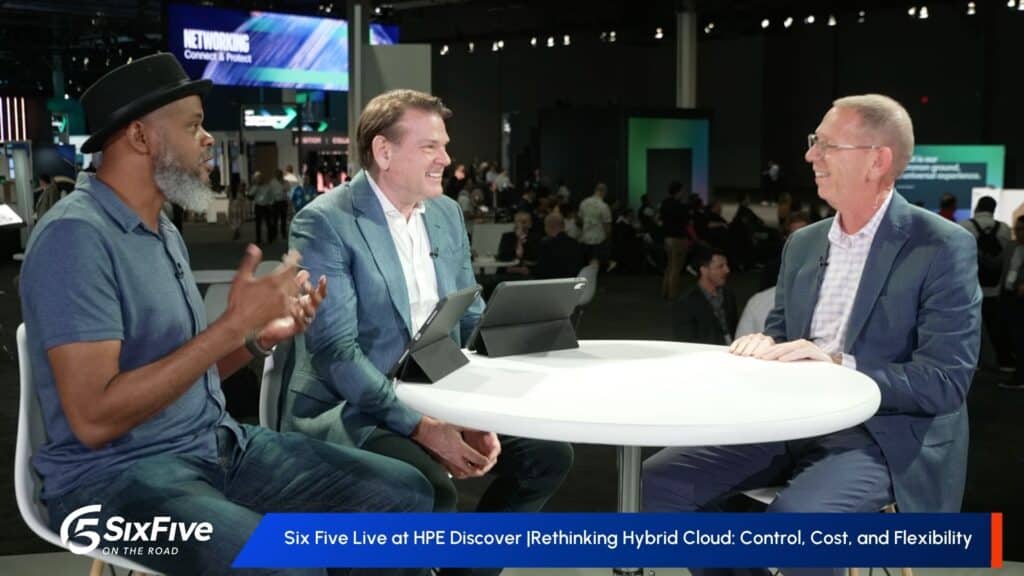The News: Actian, a division of HCLSoftware, announced the relaunch of Actian Data Platform featuring hybrid integration as a service. Formerly known as Avalanche, the platform promises to help businesses improve data quality and, ultimately, improve decision-making capabilities throughout the enterprise. Read the full press release on the Actian website.
Actian’s Avalanche Gets a Rebrand as Actian Data Platform
Analyst Take: It is a good time to be in the data business. It is safe to say that nearly every possible company in the world right now is trying to figure out not only how to keep their data cleaner and more organized but also how to manage the overall amount of data they are processing. Respondents of one survey showed that data volumes in their companies were growing by more than 60% per month, with 1 in 10 saying volumes were increasing at a rate of 100% or more per month. That is a lot of data to sort, clean, integrate, and manage.
Actian, the data and analytics division of HCLSoftware, has officially relaunched the Actian Data Platform, formerly known as Avalanche. This enhanced platform introduces hybrid integration as a service capabilities, bolstering businesses’ data confidence, improving data quality, reducing costs, and facilitating better decision-making throughout the organization.
Based on the total addressable market (TAM) and industry tailwinds for this sector, the Actian Data Platform has a strong potential for growth: unifying and integrating data via a single pane of glass, data prep, data warehousing via multiple data environments (public, multicloud, hybrid-cloud, on-premises), and streamlining data workflows. Sources say the new Actian Data Platform can save more than 100 hours of manual data work in a month, which means insights can be made faster and with a lower cost. That is something every company working with data right now wants.
The Actian Data Platform sets itself apart with its real-time data collection, management, and analysis capabilities, encompassing transactional databases, data integration, data quality, and data warehousing, all within a user-friendly platform. It supports data from various environments, including public cloud, multi/hybrid cloud, and on-premises, all through a unified interface.
Actian Senior Vice President of Engineering Emma McGrattan highlighted the platform’s self-service data integration capabilities, emphasizing cost reduction and versatile use cases without requiring multiple products. The platform simplifies the delivery of real-time analytics and insights, fostering trust in data that businesses can rapidly act upon.
One of the key highlights of the platform is its IaaS functionality, featuring a redesigned user interface (UI) and user experience (UX). Its application programming interface (API)-first integration capabilities enable effortless data integration from diverse sources, bridging data silos and streamlining data workflows. The platform’s native integration and data quality services offer essential tools for data management and preparation that include:
- Connect Data Sources: Users can integrate and transform data from various sources through easy-to-use drag-and-drop blocks, eliminating the need for intricate programming or coding.
- Connect to Multiple Applications: The platform allows connections to applications with REST or SOAP APIs, enabling the creation of reusable business data integrations and application integrations.
- Broaden Access to Data: With no-code, low-code, and pro-code integration and transformation options, the platform enhances usability across the organization, reducing reliance on experts and accelerating application delivery.
- Simplify Data Profiling: The platform provides data profiling capabilities to identify data characteristics and anomalies, assess data quality, and determine data preparation needs.
- Improve Data Quality: Users can track data quality over time and apply rules to existing integrations, swiftly identifying and isolating data inconsistencies.
The Actian Data Platform aligns with advanced use cases such as generative AI, automating time-consuming data preparation tasks. By enabling AI-ready data, it instills confidence in the data used to train AI models, opening new possibilities in the rapidly evolving Digital+ economy.
Why the Rebrand?
According to the company’s press release, the Actian Data Platform with integration as a service features a new UI and better UX. It is likely Actian felt that the new UX was deserving of an overall branding revamp so that customers—and potential customers—understand the product is different than its predecessor. The platform features an API-first integration, which means customers can use data from a variety of sources to bridge things like data silos and complicated data workflows. Users can build or use existing APIs with user-friendly drag-and-drop blocks, eliminating the need for extensive, complex coding. The platform also features low-code, no-code, and pro-code integration, so it can be used more widely throughout the enterprise.
There could also be deeper reasons for the rebrand. At this point in time, data is not just being used to gain insights for personalization and improving customer experience (CX). It is being used for building and training generative AI models. The cleaner the data used to train an AI model, the better the information it can generate. In the current environment, it is possible Actian realized it needed to rebuild its image as a potential new partner for those looking for low-code and no-code accessibility of data with use for generative AI. That is all speculation, of course. But with so much activity in the generative AI sphere, it is an absolute possibility that Actian wants to elevate its data assets to make them more attractive for potential generative AI customers.
Looking Ahead
In conclusion, the Actian relaunch of the Actian Data Platform represents a significant milestone in the world of data and analytics. The platform’s hybrid integration capabilities, user-friendly interface, and robust data management features position it as a valuable asset for businesses seeking to harness the power of their data effectively. As data complexity continues to grow, platforms like this one are poised to play a pivotal role in simplifying data workflows and fostering data-driven innovation.
Disclosure: The Futurum Group is a research and advisory firm that engages or has engaged in research, analysis, and advisory services with many technology companies, including those mentioned in this article. The author does not hold any equity positions with any company mentioned in this article.
Analysis and opinions expressed herein are specific to the analyst individually and data and other information that might have been provided for validation, not those of The Futurum Group as a whole.
Other Insights from The Futurum Group:
Author Information
Steven engages with the world’s largest technology brands to explore new operating models and how they drive innovation and competitive edge.





